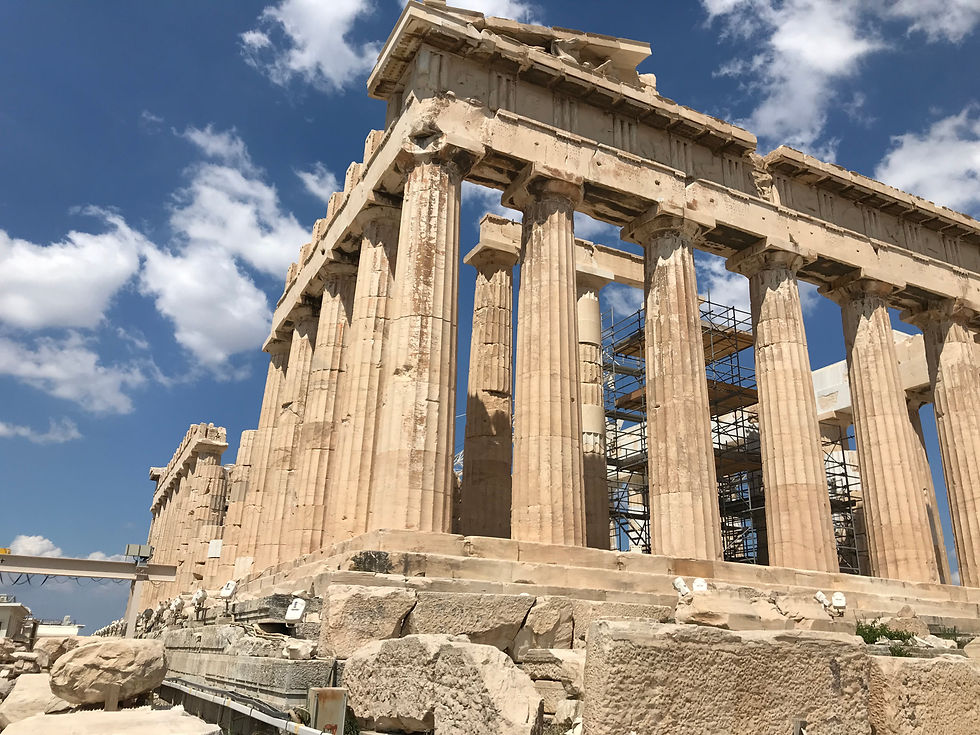
Just this week it was announced that Greece will allow American visitors for the first time in over a year. Let me immediately dispel any ideas the reader may get about this travel blog. I am NOT going to write about beaches and resorts. If you read any of my other blogs connected to the Mediterranean you know that when I get around, I want to see the history of the region. And what better place to see history literally splayed out before your eyes than in Greece?

I am a particular fanatic of archaeology, or ‘ruins’ in other parlance. In the northern Mediterranean, this means Greek, Roman, or Byzantine sites. One can travel to Greece and only see Athens and come away impressed and satisfied with the sites just around the capitol city.
Ground zero is the Acropolis, or the ‘high city’ a mesa upon which sit the greatest surviving monuments of ancient Greece, including the columned temple known as the Parthenon. To climb up to this hallowed place gives you a perspective not just on the genius and grandeur of ancient Greece, but also provides a magnificent view over the massive, modern city of Athens.

Throughout the city are numerous sites, but perhaps one of the best after the Acropolis is the Museum of Archeology where you get a sense of the detailed artistry of the world’s first democracy. The bronze sculptures were the finest work in my eyes, though the marble carvings justifiably receive the most attention and praise.
One piece that really impacted me was a bronze sculpture of a young boy astride a galloping stallion. The jewelry and goldwork were also amazing to behold. It would be easy to spend a full day in the museum, although as D.H. Lawrence once said (to paraphrase), ‘some museums through the sheer volume of their exhibitions force one to hurry through them.’
We took a day-long excursion to Delphi from Athens. Delphi is a mystical place in the mountains of central Greece, where over two thousand years ago noble and commoner Greeks would travel to consult an oracle at the great Temple of Apollo. The oracle—a woman seer—would divine the fortune for anyone requesting it. The oracle was called Pythia and was a middle-aged woman chosen from among the priestesses of the temple in the nearby village of Delphi.

On the seventh day of the warmest nine months of the year, after a purification ritual that involved fasting, the Pythia would sit on a tripod with a laurel twig in one hand and a vessel of spring water in the other. The tripod was perched above a natural geo-thermal fissure from whence emanated sulfurous fumes. All day long she would recite clues (supposedly given down from Apollo himself) to the people who had come to learn about their future prospects.
Today the Temple of Apollo sits in a remote region overlooking a beautiful valley, just north of the Gulf of Corinth. After bustling Athens, it is quiet and peaceful in Delphi. For me it was the highlight of our trip to Greece.

The other highlight of Greece was the wonderful food. Mediterranean diets are fresh and wonderful, especially the great seafood. Another good thing Greece has going for it today, is that—although it is far away for many American travelers—it is relatively cheap compared to the rest of Europe.

コメント